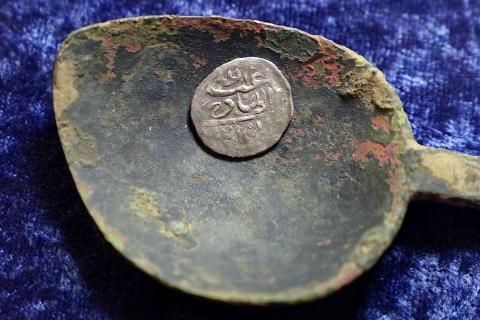Ancient coins may solve mystery of murderous 1600s pirate

A handful of coins unearthed from a pick-your-own-fruit orchard in rural Rhode Island and other random corners of New England may help solve one of the planet's oldest cold cases.
The villain in this tale: a murderous English pirate who became the world's most-wanted criminal after plundering a ship carrying Muslim pilgrims home to India from Mecca, then eluded capture by posing as a slave trader.
"It's a new history of a nearly perfect crime," said Jim Bailey, an amateur historian and metal detectorist who found the first intact 17th-century Arabian coin in a meadow in Middletown.
That ancient pocket change, the oldest ever found in North America, could explain how pirate Capt. Henry Every vanished into the wind.
On Sept. 7, 1695, the pirate ship Fancy, commanded by Every, ambushed and captured the Ganj-i-Sawai, a royal vessel owned by Indian emperor Aurangzeb, then one of the world's most powerful men. Aboard were not only the worshipers returning from their pilgrimage, but tens of millions of dollars' worth of gold and silver.
What followed was one of the most lucrative and heinous robberies of all time.
Historical accounts say his band tortured and killed the men aboard the Indian ship and raped the women before escaping to the Bahamas, a haven for pirates. But word quickly spread of their crimes, and English King William III, under enormous pressure from a scandalized India and the East India Company trading giant, put a large bounty on their heads.
"If you Google 'first worldwide manhunt,' it comes up as Every," Bailey said. "Everybody was looking for these guys."
Until now, historians only knew that Every eventually sailed to Ireland in 1696, where the trail went cold. But Bailey says the coins he and...
- Log in to post comments










